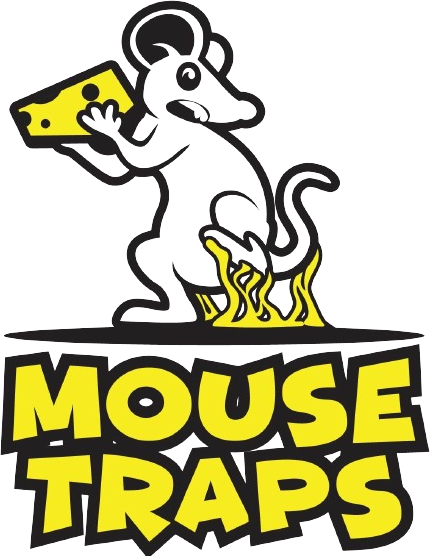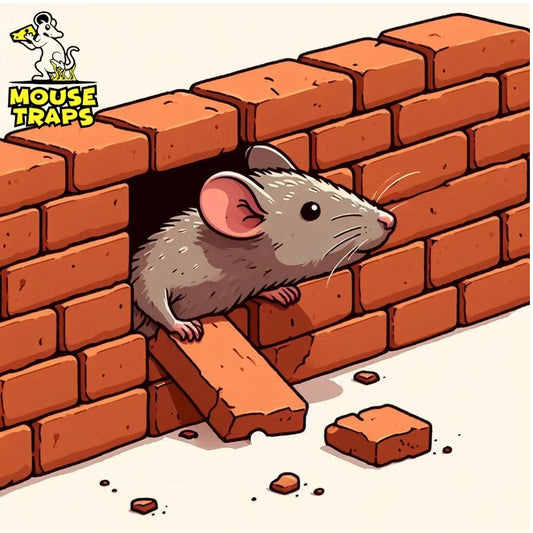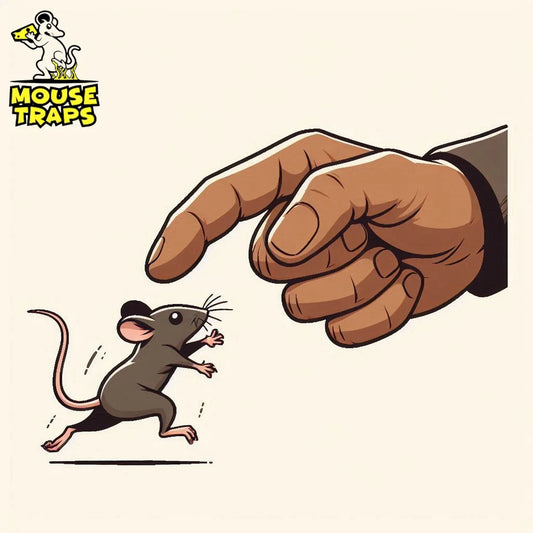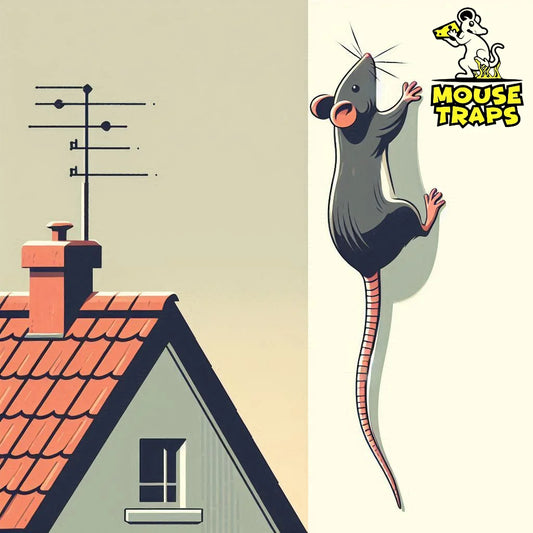Introduction:
Dealing with mice caught in traps can be a challenging and sometimes distressing situation for many individuals. While the primary purpose of traps is to capture rodents, it's essential to address the humane euthanasia of any mice caught to minimize suffering. In this article we will discuss two ways to humanely put down mice that are caught in traps; using dislocation and employing a CO2 chamber.
Cervical Dislocation:
Cervical dislocation is a method commonly used to euthanize small rodents like mice. This method entails swiftly and firmly exerting pressure at the back of the skull leading to an painless fracture of the neck causing the mouse to lose consciousness and pass away.

To perform cervical dislocation:
- Carefully grasp the mouse's head between your thumb and forefinger, placing your thumb on one side of the neck and your forefinger on the other side, just behind the ears.
- With a swift and confident motion, pull the mouse's head backward while applying pressure with your thumb and forefinger. This action might result in the misalignment of the neck bones causing a state of unconsciousness and eventually death.
- Performing this procedure quickly and efficiently is essential to guarantee a compassionate and pain free euthanasia experience, for the mouse.
CO2 Chamber:
Another humane method for euthanizing mice caught in traps is the use of a CO2 chamber. This technique requires placing the mouse inside a chamber where carbon dioxide (CO2)'s present causing it to become unconscious and eventually succumb to death due, to hypoxia a lack of oxygen.

To use a CO2 chamber:
- Select a sealed container, such as a plastic bin or a chamber specifically designed for euthanasia purposes. Ensure that the container is large enough to accommodate the mouse comfortably without overcrowding.
- Connect a source of carbon dioxide, such as a tank or a CO2 generator, to the chamber. Slowly introduce the CO2 into the chamber, allowing it to displace the air gradually.
- As the CO2 concentration increases, the mouse will become unconscious within a few minutes due to oxygen deprivation. Death typically follows shortly afterward.
- Monitor the process closely to ensure that the CO2 concentration reaches levels sufficient to induce rapid unconsciousness and death.
- After the mouse has passed away, dispose of the body properly and sanitize the chamber to prevent any potential contamination or odor.
Note:
As you know these are the methods of euthanizing mice when it got caught in a trap. Live Mouse Traps can make this possible as they can caught mice without harming them very efficiently and in a humane way. Now, It depends upon you whether you release those mice alive in a far place or get rid of them using the methods mentioned above. There are variety of mouse traps available in the market but the most suitable traps for this purpose are live humane mouse traps. To buy these Trap click the link given below;
Live Mouse Traps:

Live mouse traps offer an approach compared to the snap traps enabling you to catch mice without causing them harm. Using traps correctly guarantees an efficient way to capture mice for relocation purposes. In this manual we will provide an explanation of the process, for utilizing traps designed for catching mice.
-
Selecting a Live Mouse Trap:
- Choose a live trap appropriate for your needs, considering factors such as size, design, and bait preference.
- Common types of live traps include cage traps and multi-catch traps. Cage traps are single-catch traps that capture one mouse at a time, while multi-catch traps can capture multiple mice without needing to reset the trap between captures.
-
Placing the Trap:
- Identify areas where mouse activity is prevalent, such as along walls, in corners, or near food sources.
- Set the trap in locations where mice are likely to travel, such as along known pathways or near mouse droppings.
- Position the trap against a wall with the entrance facing the area where mice are active, ensuring that the trap is stable and won't be easily tipped over by the mice.
-
Baiting the Trap:
- Use an attractive bait to entice mice into the trap. Common bait options include peanut butter, chocolate, nuts, or dried fruits.
- Apply a small amount of bait to the trigger mechanism or place it at the back of the trap to encourage mice to enter.
- Avoid using too much bait, as this may allow mice to access the bait without triggering the trap.
-
Checking and Emptying the Trap:
- Check the trap regularly, ideally every 8-12 hours, to ensure captured mice are promptly removed.
- When a mouse is captured, approach the trap calmly and carefully to avoid startling the mouse.
- Hold the trap securely and transport it to a suitable release location, such as a wooded area or field away from human habitation.
- Open the trap door gently and allow the mouse to exit on its own. Do not attempt to handle or release the mouse directly, as this may cause stress or injury to the animal.
- Once the mouse has been released, clean and sanitize the trap before resetting it for future use.
Conclusion:
When handling mice that have been trapped it is crucial to focus on using techniques for euthanasia to reduce their suffering. Cervical dislocation and CO2 chambers are two widely accepted and effective techniques for euthanizing mice caught in traps. However, it's crucial to choose the method that you are most comfortable with and capable of performing effectively. Additionally, always prioritize the safety and well-being of both the mice and yourself when handling traps or euthanizing them.




